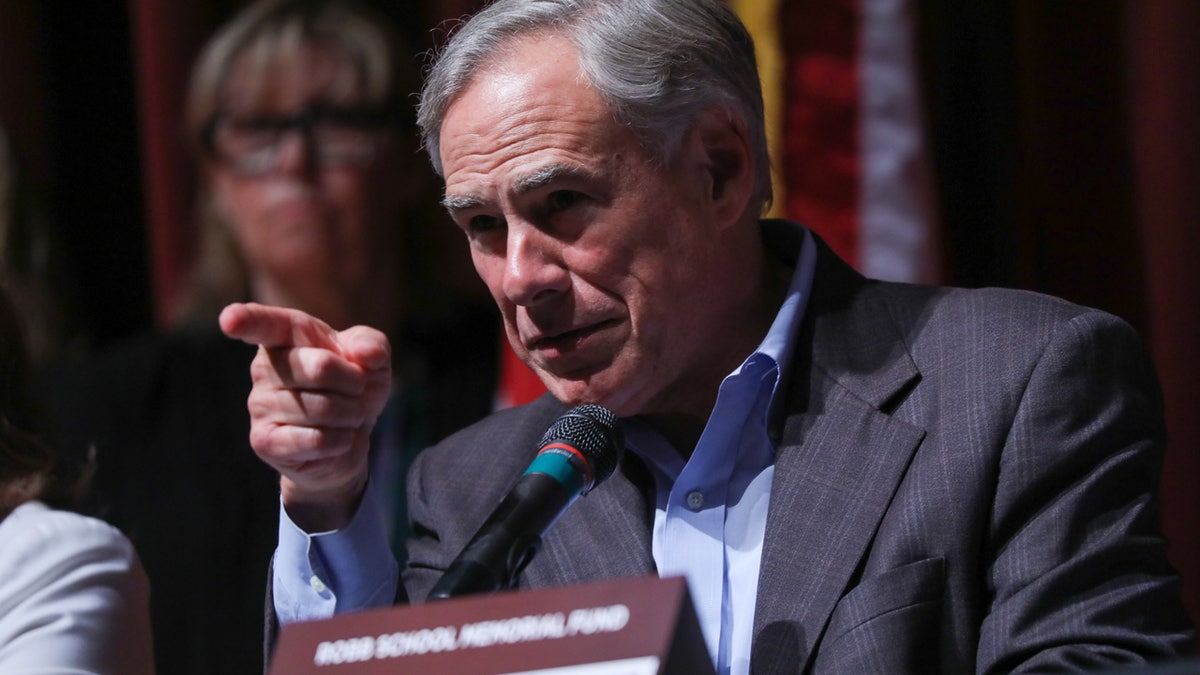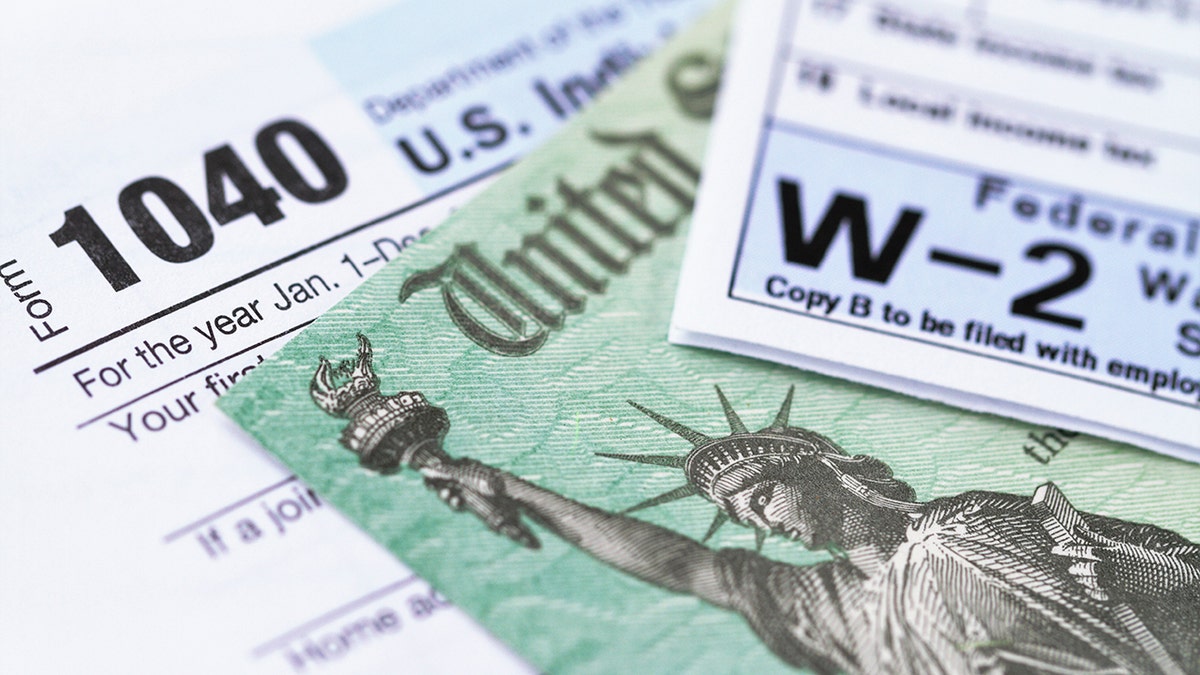High taxes, rising costs, crime spur exodus to red states: Jonas Max Ferris, Danielle DiMartino
Fox News Contributor Jonas Max Ferris and Quill Intelligence CEO Danielle DiMartino discuss the population exodus from Democrat states to GOP states over taxes, cost of living and crime on 'Cavuto Live'.
Republican-led red states on average use taxpayers' money more effectively to provide superior government services than Democrat-led blue states, according to a new study.
WalletHub used 29 metrics to compare the quality and efficiency of state government services across five categories — health, safety, education, the economy, and infrastructure and pollution — taking into account the different rates at which residents are taxed in each state.
According to WalletHub's findings, red states yield a better return on investment for taxpayers, ranking on average significantly higher than their blue state counterparts. States were designated red or blue based on how they voted in the 2020 presidential election.
"Different states have dramatically different tax burdens," the report states. "This begs the question of whether people in high-tax states receive superior government services. Likewise, are low-tax states more efficient or do they receive low-quality services? In short, where do taxpayers get the most and least bang for their buck? WalletHub aimed to answer that question by contrasting state and local tax collections with the quality of the services residents receive in each of the 50 states."

Ron DeSantis at a rally in Florida in 2018. (REUTERS/Carlo Allegri)
HIGH-TAX STATE EXODUS ACCELERATES AS MORE AMERICANS FLEE TO FLORIDA, TEXAS
Specifically, WalletHub analyzed each state across the five key government-service categories of health, safety, education, the economy, and infrastructure and pollution, breaking each category down into 29 relevant metrics. These metrics, which were weighted differently based on importance, ranged from the violent crime rate and median household income to the quality of the school system, public hospitals, and roads and bridges. Each metric was graded on a 100-point scale.
WalletHub then determined each state's weighted average across all 29 metrics to calculate its overall "government services score." The study then constructed a "taxpayer return on investment" ranking by comparing each state's government services score to it "total taxes paid per capita," which only included the population aged 18 and older. For each figure, No. 1 is the best and No. 50 is the worst.
Based on this methodology, these are the top 10 states where Americans get the best return in government services for the taxes they pay:
- New Hampshire (total taxes rank of 3 and government services rank of 4)
- Florida (total taxes rank of 2 and government services rank of 23)
- Alaska (total taxes rank of 1 and government services rank of 48)
- South Dakota (total taxes rank of 6 and government services rank of 25)
- Texas (total taxes rank of 4 and government services rank of 36)
- Missouri (total taxes rank of 5 and government services rank of 38)
- Virginia (total taxes rank of 28 and government services rank of 1)
- Georgia (total taxes rank of 8 and government services rank of 33)
- Ohio (total taxes rank of 14 and government services rank of 26)
- Wyoming (total taxes rank of 19 and government services rank of 16)

Texas Gov. Greg Abbott speaks during a press conference about the mass shooting at Uvalde High School on May 27, 2022 in Uvalde, Texas. (Photo by Yasin Ozturk/Anadolu Agency via Getty Images)
TEXAS AND FLORIDA REMAIN TOP DESTINATIONS FOR MOVERS IN 2022, U-HAUL SAYS
And here are the 10 worst states where Americans get the worst return in government services for the taxes they pay:
- New York (total taxes rank of 41 and government services rank of 20)
- Louisiana (total taxes rank of 9 and government services rank of 50)
- Oregon (total taxes rank of 37 and government services rank of 37)
- Vermont (total taxes rank of 49 and government services rank of 3)
- Connecticut (total taxes rank of 48 and government services rank of 5)
- Delaware (total taxes rank of 45 and government services rank of 17)
- Arkansas (total taxes rank of 33 and government services rank of 44)
- New Mexico (total taxes rank of 24 and government services rank of 49)
- Hawaii (total taxes rank of 46 and government services rank of 31)
- California (total taxes rank of 50 and government services rank of 35)
Overall, red states finished with an average rank of 21.52, compared to blue states, which finished with an average rank of 29.48.
The rankings seem to indicate states with higher taxes don't necessarily provide superior government services. California, for example, came in last in terms of taxpayer return of investment but has the nation's highest top income tax rate at 13.3% among other onerous taxes.

California Governor Gavin Newsom speaks before signing legislation establishing the Community Assistance, Recovery and Empowerment Act, in San Jose, Calif., Wednesday, Sept. 14, 2022. (Dai Sugano/Bay Area News Group via AP)
'CLASS WARFARE': WEALTH TAX THE LATEST MEASURE BY CALIFORNIA DEMOCRATS TO SQUEEZE THE RICH
According to Mitchell Franklin, a professor of accounting at Le Moyne College's Madden School of Business, it shouldn't be surprising that states with high taxes burdens don't always provide better services.
"They collect more revenues, but often the political policies and 'red tape' these states have make them less efficient than other states," he told WalletHub. "They collect more, but spend it in a way that many would say is less efficient than others who have less to work with, often driven by political beliefs."
Some high-tax states, especially in the northeast, ranked as providing high-quality services, but WalletHub determined the tax costs generally outweighed the benefits for residents.
Vicky Dominguez, a professor of business administration and accounting at the College of Southern Nevada, noted that high taxes often have several implications beyond simply those who payer higher rates.
"Having to pay additional state income and local taxes creates hardships for low-income and fixed social security income earners," she told WalletHub. "The cost of living is higher in those states where state income and local taxes are imposed. States with high tax burdens do not necessarily provide better government services. Because most of the government services are federally funded and the state's government services are driven by political influences that favor the low-income bracket residents."

A 1040 income tax form and W-2 wage statement with a Federal Treasury refund check. (iStock)
Perhaps such considerations are factoring into people's decisions to leave high-tax states.
The 10 highest tax states lost nearly 1 in 100 residents in net domestic migration between July 2021 and July 2022, while the 10 lowest tax states gained almost 1 in 100, according to a recent analysis by James Doti, president emeritus and economics professor at Chapman University.
Meanwhile, the U-Haul Growth Index, which measured more than two million one-way trips last year, found that California ranked last on the index as demand for trucks out of the Golden State spiked.
"The latest census has shown that the highest tax states, California, New York, and Illinois, have all seen massive population exodus," Nicholas Robinson, director of accountancy at Illinois University, told WalletHub. "The states that have grown the most, Florida and Texas, do not have an income tax. The benefits or detriments of being in a high-tax state versus a low-tax state could be assessed by the population voting with its feet."
CLICK HERE TO GET THE FOX NEWS APP
As for how state and local governments can use tax revenue more efficiently, Franklin had a few suggestions.
"Keep politics out of it, stop the red tape and policies that encourage waste and over spending," he said. "This will not be popular, but political pressure plays too much of a spending role over the best business decision and leads to money being spent in the places that are not best for the area overall for long-term growth. There is economic research that shows that government is much less efficient at spending and managing programs than private industry."





